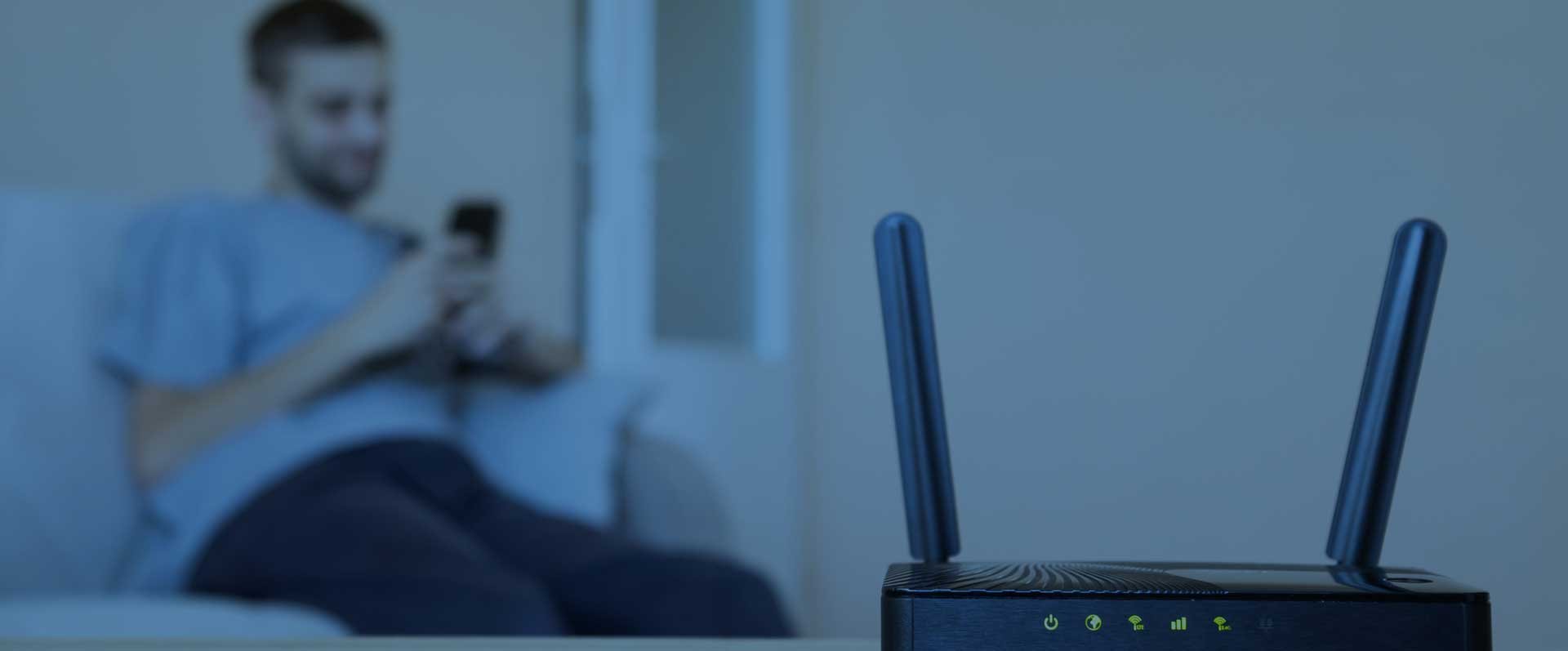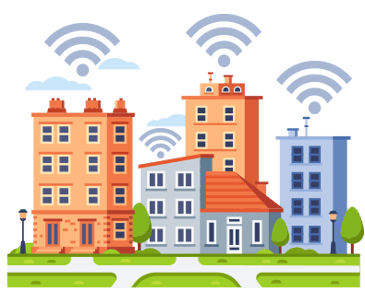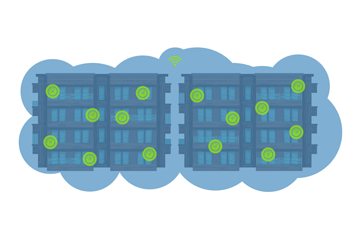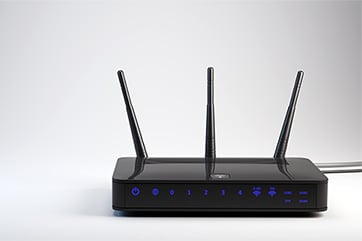Does Your Multi-Tenant Property Have Internet & WiFi Tech Debt?

A Guide for MDU Property Owners
As a property owner, ensuring your multi-tenant space offers robust internet and WiFi services is paramount. Yet, despite the best intentions, many property owners find themselves grappling with a persistent issue: internet and technical debt or ‘tech debt’ for short.
But what exactly is internet and tech debt?
Think of it as the accumulation of outdated or insufficient internet infrastructure within your property. It's the lurking shadow behind frustrated tenants' complaints about slow speeds, dropped connections, and unreliable service.
In this guide, we'll investigate the concept of internet and technical debt and explore its implications for property owners and tenants alike. More importantly, we'll highlight the critical importance of identifying and addressing this debt to not only maintain a competitive edge in the market but also to ensure the satisfaction and retention of your valued residents.
So, if you're ready to take proactive steps towards a connected future for your multi-tenant property, read on. Let's uncover the hidden costs of internet and WiFi technical debt and discover strategies to overcome them for a more digitally empowered tomorrow.
What is Internet & Technical Debt in Multi-Tenant Properties?
Internet and WiFi tech debt in multi-tenant properties refers to the accumulation of outdated or insufficient internet infrastructure that hampers the delivery of reliable and high-speed internet connectivity to tenants within the property. It encompasses various factors, including:
- Outdated Cabling Infrastructure: Traditional coaxial cables or older Cat5e cables may struggle to meet the demands of modern internet speeds. Fiber optic cables or Cat 6a, on the other hand, offer significantly higher bandwidth and faster data transmission rates, but many properties still rely on outdated cabling infrastructure.
- Insufficient Wireless Access Point Coverage: Inadequate placement or insufficient numbers of wireless access points (WAPs) can result in dead zones or areas with weak WiFi signals, leading to connectivity issues and frustrated tenants.
- Limited Internet Bandwidth Capacity: As tenant needs for internet bandwidth grow, properties with limited capacity may struggle to meet demand, resulting in slow speeds and network congestion during peak usage times.
Property owners or managers may resort to temporary solutions, such as router resets or bandwidth throttling to address immediate complaints without addressing the underlying network deficiencies. While these quick fixes may provide temporary relief, they do not solve the root cause of the problem and can contribute to ongoing technical debt.
 Negative Consequences of Internet & Tech Debt
Negative Consequences of Internet & Tech Debt
Frustrated Tenants:
Slow internet speeds and frequent connection drops can lead to immense frustration among tenants. In an era where reliable connectivity is expected, experiencing technical difficulties with internet access can hinder productivity, disrupt entertainment, and strain everyday activities.
Frustrated Property Management Staff:
Property management staff often find themselves thrust into the role of makeshift tech support, dealing with a constant stream of resident complaints regarding internet issues. This not only detracts from their primary responsibilities but also fosters frustration and dissatisfaction among staff members who must continually address technical issues beyond their expertise.
Difficulty Attracting and Retaining Tenants:
Reliable internet is no longer just a luxury—it is the MOST IMPORTANT UTILITY®. Prospective tenants, especially those who work remotely or rely on online resources for education, are increasingly prioritizing properties with robust internet infrastructure. Failure to provide adequate connectivity can deter potential tenants and lead existing ones to seek alternative accommodations where their digital needs are met.
Decreased Property Value:
With reliable internet becoming a fundamental requirement for many individuals, properties plagued by internet and technical debt risk experiencing decreased value in the eyes of potential buyers or investors. In a competitive real estate market, properties that fail to provide essential amenities like reliable internet are likely to be perceived as less desirable and consequently command lower selling prices or rental rates.
Bad Reviews and Negative Reputation:
If residents get frustrated with the ability to get high quality internet or have issues with outages or service, the negativity can bleed over to your reputation and negative comments online and negative social signals. Poor reviews or comments on social media sites will make it harder to attract new tenants, which in-turn affects your property value.
 Signs Your Multi-Tenant Property Might Have Internet & Tech Debt
Signs Your Multi-Tenant Property Might Have Internet & Tech Debt
It is important for property owners to identify potential signs of tech debt, so they can be addressed in a proper and timely manner. Some problems that may arise are listed below:
Frequent Tenant Complaints:
If you're consistently fielding complaints from tenants about slow internet speeds, dropped connections, or areas with limited WiFi coverage, it's a strong indicator that your property's network infrastructure may be struggling to keep up with demand. Ignoring these complaints can lead to tenant dissatisfaction and exacerbate technical debt over time.
Limited Bandwidth Capacity:
As tenant internet usage evolves to include bandwidth-intensive activities such as video conferencing and online gaming, properties with inadequate bandwidth capacity may find themselves unable to meet these demands. If tenants frequently experience sluggish internet speeds or network congestion during peak usage hours, it's likely a sign that your property's bandwidth capacity needs an upgrade.
Outdated Network Equipment:
Relying on outdated routers, switches, or other networking equipment known for limited performance can impede your property's ability to deliver reliable internet connectivity. If your network equipment hasn't been upgraded in years or is no longer supported by the manufacturer, it's time to consider investing in modern, high-performance hardware to alleviate technical debt.
Difficulty Expanding Service:
If your property struggles to upgrade internet speeds or install additional wireless access points (WAPs) due to limitations of the existing infrastructure, it's a clear indication of technical debt. Outdated cabling or incompatible equipment may hinder your ability to expand and improve internet services.
Limited Connectivity in Certain Areas:
Dead zones or areas with weak or no WiFi signal within your property signal inadequate wireless access point (WAP) coverage. Tenants encountering connectivity issues in specific locations may resort to alternative solutions or, worse, consider relocating to properties with better connectivity. Addressing these coverage gaps is essential for minimizing technical debt and ensuring a seamless internet experience for all tenants.
Inability to deploy asset protection technology throughout the property:
Modern asset protection technologies, such as surveillance cameras, smart locks, and security sensors, rely heavily on strong and extensive internet connectivity. If you find that deploying these technologies is difficult or impossible, it’s a clear indication that your property's current infrastructure is outdated. This not only compromises the safety of your property but also diminishes its appeal to potential tenants who prioritize security.
Inability for residents to roam and use wifi throughout the property:
Reliable Wi-Fi coverage is an expectation rather than a luxury. If your residents experience frequent dead zones or weak signals as they move around the property, this is a red flag. The inability to provide consistent and reliable Wi-Fi coverage can frustrate tenants and potentially lead to higher turnover rates. It reflects poorly on the property's overall management and technological capabilities.
Not having Ethernet connectivity to every apartment:
If your apartments lack Ethernet ports, residents might struggle with slow or unreliable internet, especially during peak usage times. This is particularly problematic for tenants who work from home or rely on high-speed internet for streaming, gaming, and other data-intensive activities. Ensuring each unit has Ethernet connectivity is a vital step in modernizing your property’s infrastructure.
Only having a Coax infrastructure used by the local cable company:
If your property only has coaxial cable, you have technical debt. Relying solely on a coaxial cable infrastructure often means limited internet service options for your residents and potentially higher costs, because you are restricted to services offered by your local cable provider. Also, if your agreement with the local cable provider includes an “anti-bulk” stipulation, then your property is encumbered by the agreement.
Coaxial cables, primarily used by traditional cable companies, may not support the high-speed internet that tenants demand. This can restrict your tenants to outdated service plans and slow internet speeds, putting your property at a disadvantage compared to those offering fiber-optic or high-speed Ethernet options. Upgrading to a more modern and versatile infrastructure can attract more tech-savvy tenants and improve overall satisfaction.
Identifying these signs early and taking proactive steps to address internet and WiFi technical debt can help property owners maintain tenant satisfaction, attract new tenants, and safeguard the long-term value of their investment.
 Benefits of Addressing Internet & WiFi Technical Debt
Benefits of Addressing Internet & WiFi Technical Debt
Improved Tenant Satisfaction:
By addressing internet and WiFi technical debt, property owners can significantly enhance tenant satisfaction. Reliable and fast internet service has transitioned from being a mere amenity to a critical necessity for tenants. Ensuring reliable connectivity contributes to a positive living or working experience, reducing tenant complaints, and increasing overall satisfaction.
Competitive Advantage:
Properties equipped with high-quality internet infrastructure gain a competitive edge in the market. Tenants, especially tech-savvy individuals, and businesses, prioritize properties that offer dependable connectivity. By meeting this demand, property owners can attract and retain desirable tenants, enhancing the property's reputation and desirability.
Increased Property Value:
Investing in a modern network infrastructure can significantly increase the value of your property. Properties with reliable internet connectivity are perceived as more valuable assets, commanding higher rental rates and property values. By demonstrating a commitment to providing essential amenities, property owners can enhance the attractiveness of their investment to potential buyers and investors.
Future Proofing for Technology Growth:
A scalable network infrastructure allows property owners to future-proof their investment against evolving technology trends. By investing in modern equipment and design principles, property owners can accommodate future upgrades in bandwidth and adopt modern technologies seamlessly. This flexibility ensures that your property remains competitive and relevant in an ever-changing technological landscape, preserving its value and appeal over time.
How to Identify and Address Internet & Tech Debt

Start by hiring a qualified network engineer to conduct a comprehensive assessment of your property's existing internet infrastructure. You can start the site survey process with DojoNetworks.
The assessment will help identify weaknesses, bottlenecks, and areas in need of improvement, providing valuable insights to guide your upgrade efforts effectively. Based on the findings of the network assessment, develop a detailed upgrade plan that outlines the necessary improvements and prioritizes them based on budgetary constraints and tenant needs.
Consider factors such as outdated equipment, insufficient bandwidth capacity, and inadequate WiFi coverage when planning upgrades. Upgrading outdated cabling infrastructure, such as replacing traditional coaxial cables with modern Cat6 or fiber optic cables, can significantly improve network performance and reliability. Investing in high-quality cabling ensures that your property is equipped to handle the demands of today's internet usage and future technological advancements. To meet the growing demands of tenants for high-speed internet access, consider upgrading your property's internet bandwidth capacity.
Work with your internet service provider to identify and implement a suitable plan that accommodates increasing bandwidth requirements and reduces network congestion during peak usage hours. Address WiFi coverage issues by strategically installing additional wireless access points (WAPs) throughout the property. This ensures consistent and reliable WiFi connectivity in every area, eliminating "dead zones" and improving overall tenant satisfaction. Make sure to determine the optimal placement and configuration of WAPs based on your property's layout and tenant density, together with a qualified technician.
Another important step is transparent communication with tenants throughout the upgrade process. Keep tenants informed about planned network upgrades, potential disruptions, and expected timelines to minimize inconvenience and manage expectations effectively. Proactive communication fosters trust and cooperation, ensuring a smoother transition to an improved internet infrastructure for all tenants.
These steps are a great way of minimizing technical debt and getting the internet infrastructure of your building on the right track.
Addressing Tech Debt for Enhanced Connectivity
Identifying and addressing internet and WiFi technical debt in multi-tenant properties is critical for maintaining competitiveness and tenant satisfaction. Technical debt, accrued from outdated or poorly maintained network infrastructure, can lead to many issues, including unreliable connectivity, security vulnerabilities, and inability to meet modern bandwidth demands.
Investing in a modern network infrastructure offers a range of benefits for property managers and tenants alike. Improved reliability and speed enhance productivity and satisfaction among tenants, while robust security measures protect sensitive information and build trust. Additionally, modern infrastructure facilitates the integration of smart building technologies, which leads to more efficient resource management and higher property appeal. Ultimately, addressing internet and WiFi technical debt ensures the property remains competitive and increases its value in the market.
To take the first step towards enhancing connectivity in your property, contact us to schedule an on-site evaluation by our qualified network engineers. Our evaluations will identify your property's specific network needs, assess potential internet and WiFi technical debt, and provide recommendations for a WiFi Rescue project tailored to your requirements.
Over 24 years of providing service to MDUs, DojoNetworks has built networks and systems that are future proofed and designed to be sustainable. We continually evolve our specifications and work to keep all our served properties on our latest spec, protecting them against tech debt. This is a major reason why, over more than two decades, we have maintained 100% customer (AKA, partner) retention.
Don't let technical debt hold your property back. Contact us today to schedule your site evaluation and embark on the journey toward seamless and frictionless connectivity for your tenants.





